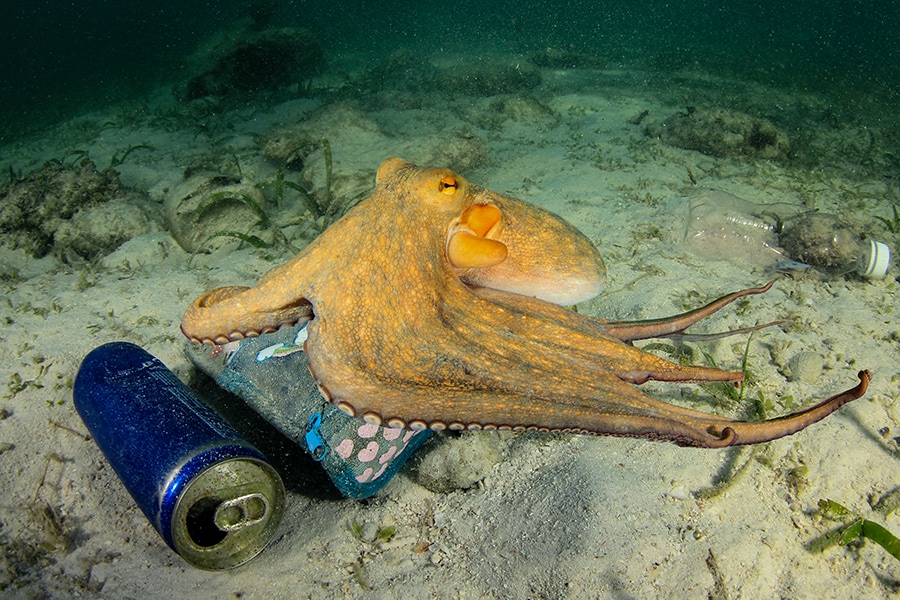
Octopuses are taking refuge in plastic waste
Within the octopus community, some creatures have shown extraordinary adaptability as they are essentially using waste produced by humans as parts of their shelter
 Bottles, cans, plastic cups, tire remains... Our waste is being used by octopuses as materials for their refuge. (Credit: Rich Carey / Shutterstock)
Bottles, cans, plastic cups, tire remains... Our waste is being used by octopuses as materials for their refuge. (Credit: Rich Carey / Shutterstock)
Thanks to the numerous images available to be seen on the internet, we have been able to better understand the universe and the daily living practices of species that inhabit the oceans. Within the octopus community, some creatures have shown extraordinary adaptability as they are essentially using waste produced by humans as parts of their shelter.
Through painstaking analysis of 261 images, Brazilian researchers from the Federal University of Rio Grande have identified 24 different species of octopus that have found shelter amidst human garbage. The most frequently used debris are objects in glass and plastic. Asia accounts for the largest number of photos, most of which were collected between 2018 and 2021 from shots taken by divers or from work done by marine biologists.
According to their research work, published in Marine Pollution Bulletin, glass bottles, cans and caps appear to be the perfect camouflage for octopuses to protect themselves from predators, such as sperm whales, killer whales or seabirds.
And at least some species of octopuses have found that these pieces of debris provide a sanctuary where they can deposit their eggs. A host of unexpected uses may prompt some to look at waste differently. But make no mistake: tire remains and plastic detritus are not without risks for these sea creatures, which are potentially being exposed to dangerous chemical compounds.







